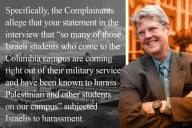You have /5 articles left.
Sign up for a free account or log in.
This semester, more than 1,000 students at City University of New York's six community colleges are entering into a new program with unusually clearcut benchmarks. If 50 percent earn their associate degrees and find employment within three years and 75 percent do so in four years, the program is, by its own definition, a success.
Only 21 percent of students who enroll in a community college in New York City end up receiving such a degree -- a percentage that is slightly lower nationally and that typically is quite low at institutions like CUNY's community colleges, where most are enrolled part time and many come from disadvantaged backgrounds. But those behind the Accelerated Study in Associate Programs, as the initiative is called, are confident that their approach will keep students more on track.
Each of the system's community colleges accepted students into ASAP based on their high school record, score on the CUNY placement test and need for a "minimal amount of remediation." Those who required some remediation took basic skills workshops over the summer to prepare them for degree credit courses this fall.
The idea is to provide a free education. Students eligible for federal or state financial aid receive additional ASAP funding to pay the balance of tuition and college fees. In order to be eligible for these benefits, students have to apply for financial aid. ASAP students are also provided their textbooks for free. Tuition at CUNY's community colleges is typically $1,400 per semester for a New York State resident attending full time, and $120 per credit for those going part time.
Students are grouped by academic interest, with the majority choosing to focus on business or liberal arts, according to Selma Botman, CUNY's executive vice chancellor and university provost. Each college offers its own curriculum, and students for the most part take classes together with a cohort of roughly 25 others.
The courses are offered in a block schedule, grouped together either in morning or afternoon sessions, so that it's convenient for students who work or have family obligations. Students generally take four courses at once, and academic advisers lay out for students a mock five- or six-semester schedule so they can see what it will take to graduate on time.
Throughout the year, students meet with tutors, a full-time adviser and "job developers" who offer placement advice. Beyond the goal of getting students to graduate within three years (ahead of the national norm of four to five), Botman said she'd consider the program a success if graduates go for their bachelor's degree or take a job that increases their salary.
"Higher education literature suggests that students who go through college on their own may at times hit bumps in the road," Botman said. "Never mind the class being challenging; colleges are big bureaucracies. When students hit the bump they can give up. But if they are taking classes together, having academic advisement together, they bond with one another. It's an important connection."
John Davis, director of the ASAP program at Bronx Community College and a professor of biology, said he's already noticed the camaraderie building among the 115 students enrolled in the program. Of that group, the average age is roughly 19, and the gender ratio is about equal. That's much different than the college's overall student population, which tends to be late 20s and be much more skewed female.
At Bronx, students are grouped into business administration, radiologic technology and liberal arts and sciences, with the latter track being the most popular. Students take general education courses all together, and the liberal arts students can decide among a range of options, including political science, criminal justice and speech pathology.
Davis said he wants instructors to speak on a bi-weekly basis to the faculty advisers about each student's performance.
"That's pretty tight control -- something you don't normally see at a community college," Davis said. "It may sound like micromanagement, but it's appreciated by students who are right out of high school."
The ASAP program, unveiled in the spring, is funded over three years at $20 million overall by the Center for Economic Opportunity out of New York Mayor Michael Bloomberg's office. It is one of many programs being funded by that office in an effort to reduce poverty in the city.
It's unclear whether new sources of funding would allow another cohort would start at the six colleges next year. Bronx has also started a health sciences academy -- a near-duplicate of the ASAP program -- that focuses on getting nursing and nuclear medicine technology students out in three years or less.
"That's an indication of the college's interest in establishing something long term," Davis said.








